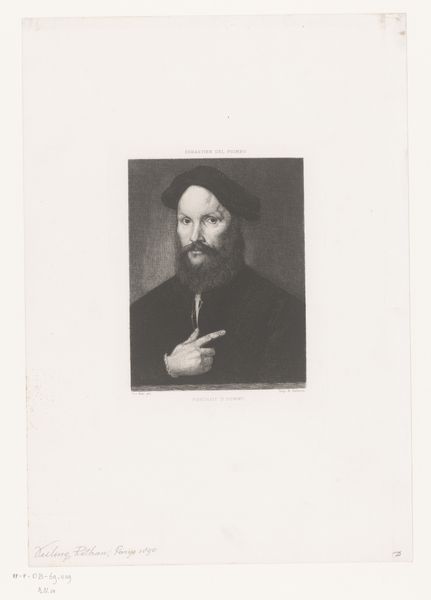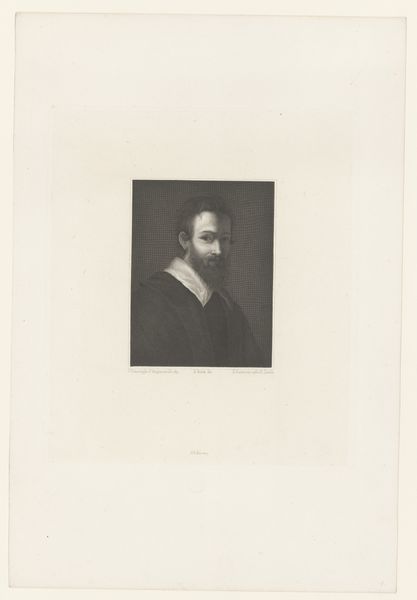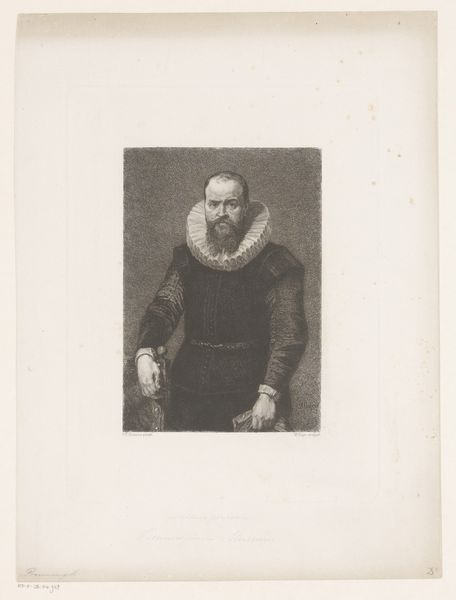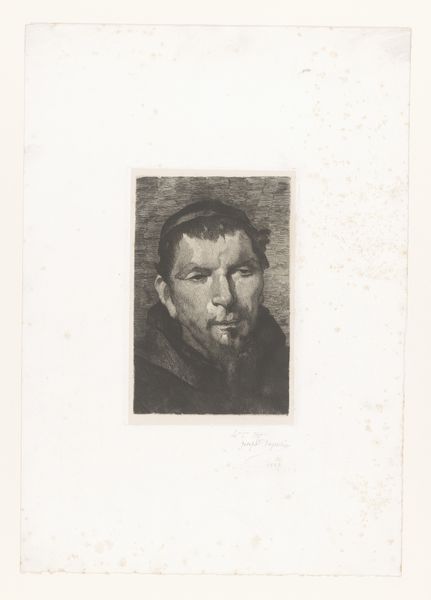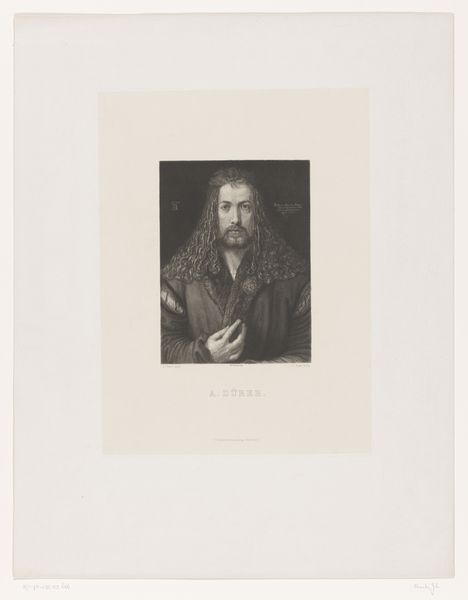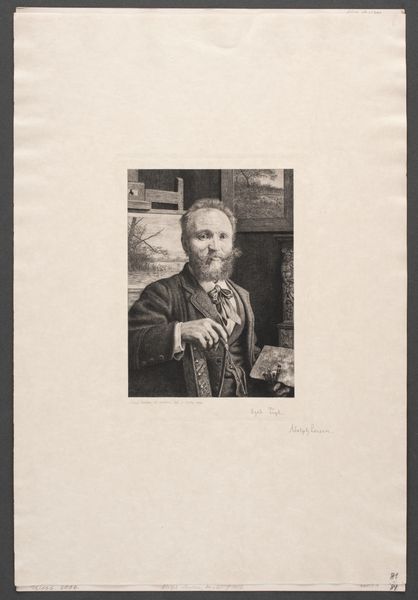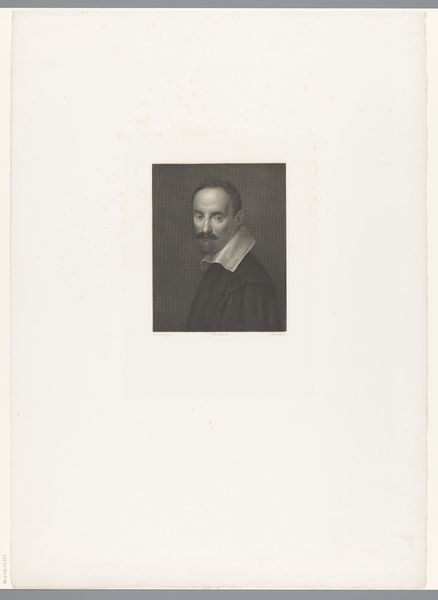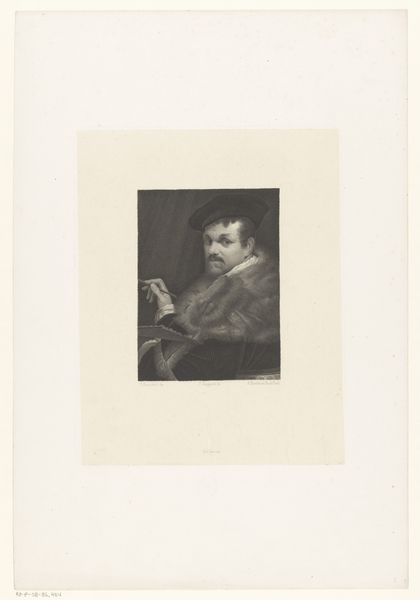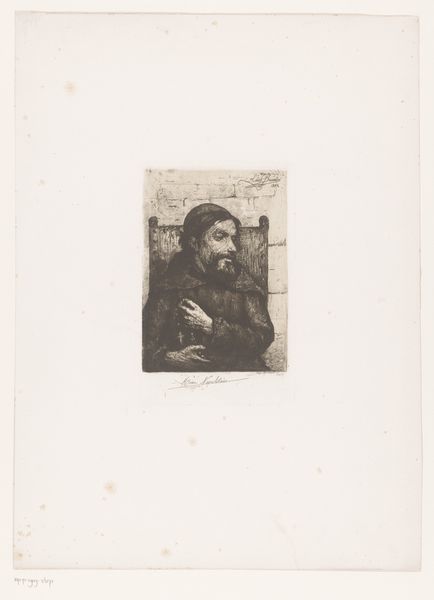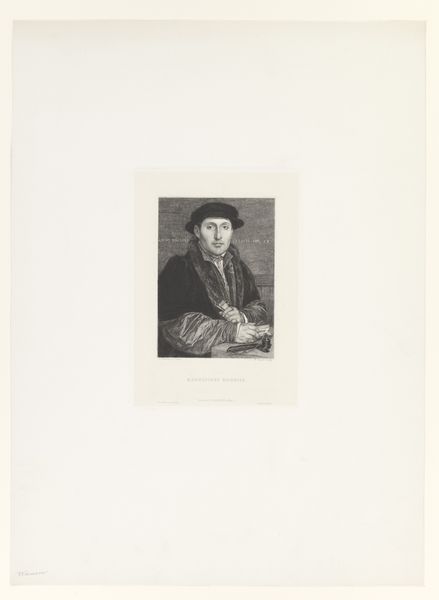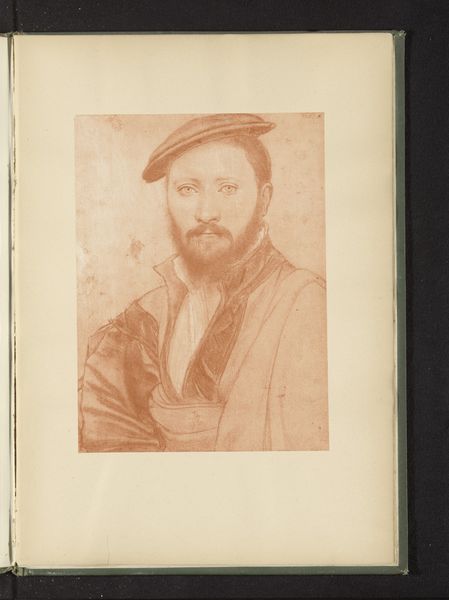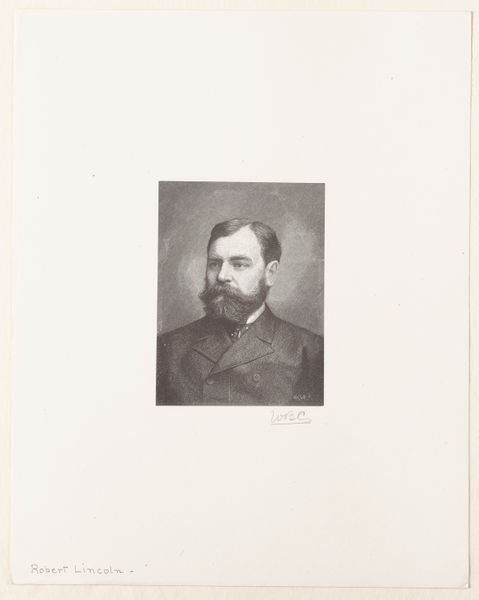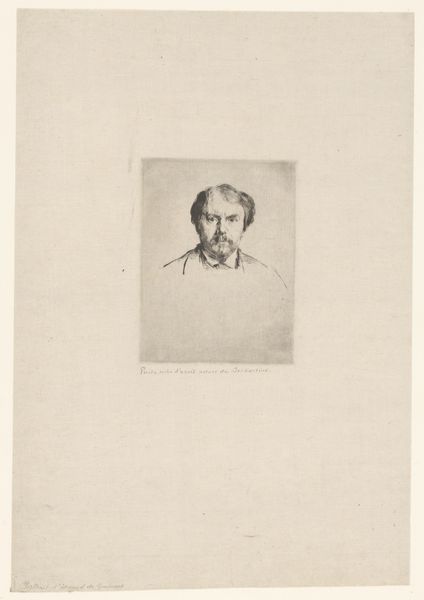
print, engraving
#
portrait
#
print photography
# print
#
genre-painting
#
tonal art
#
engraving
Dimensions: height 543 mm, width 360 mm
Copyright: Rijks Museum: Open Domain
Curator: Immediately striking, isn’t it? There's a stillness, an intensity to his gaze. The composition seems straightforward, but the interplay between the man and the falcon holds the eye. Editor: Indeed. This is "Portret van een 28-jarige man met een valk," created between 1867 and 1874. Jan Mesker is the artist, and this is a print, using an engraving technique, housed here at the Rijksmuseum. These types of engravings gained popularity, because of their relatively cheap costs of production for larger scale publications. Curator: That connection with the falcon resonates strongly. Historically, birds often serve as symbols of freedom or of the soul. Here, though, the falcon seems less about liberty and more about a controlled power, reflecting the man’s own social standing, perhaps? Editor: Exactly. The falcon, traditionally a symbol of nobility and status, points to the man's identity within the hierarchical structures of that era. Portraits of this type served to reinforce and publicly display that status, demonstrating the subject's access to luxury and leisure. The very act of commissioning such a work speaks volumes about socio-economic position. Curator: Consider also how the tonality enhances the psychological depth. It brings an introspection, like we’re invited into his internal world – or rather, a constructed persona meant to impress a specific circle. He wants to be seen as capable, intellectual, perhaps, and certainly privileged. Editor: The artist certainly leveraged the tonal gradations afforded by the engraving process to enhance that sense of gravitas. He controlled access to the distribution, controlling the persona being viewed. It makes us consider the way visual media operated at the time as a tool for identity construction and social validation, right down to the types of magazines it could be seen in, targeting certain members of Dutch society. Curator: I keep coming back to the eyes of both the man and the falcon; they each project such self-assuredness and control of posture. It shows what cultural continuity transmits about the idealization of particular character values. Editor: I find the choice of printing and its proliferation interesting. It democratized access to his portrait to an extent but still served to reinforce the existing social order by constantly showcasing the symbols and attributes of power. This really puts into focus the museum's role in preserving not just the artwork itself, but its continued interpretation across time. Curator: Indeed, that tension makes this work all the more compelling, allowing its subtle messages of status and character still being broadcast. Editor: Absolutely. Considering that tension provides crucial insight into both its historical and continued public impact.
Comments
No comments
Be the first to comment and join the conversation on the ultimate creative platform.
